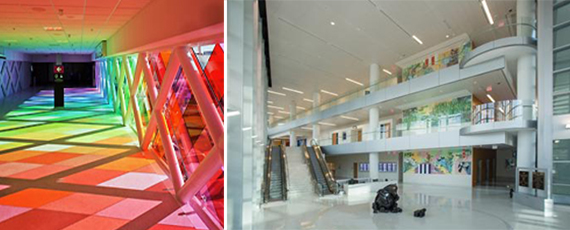Trending
Once opposed by Wynwood BID, Art in Public Places ordinance heads to Miami commission

Opposed months ago by the Wynwood Business Improvement District, a proposed city of Miami ordinance will require real estate developers to include visual art pieces in their building projects – pending commission approval next week.
Called the Art in Public Places Program, the planned code revives a law the city of Miami enacted back in 1967, but, “due to changes in administration the program went dormant,” city documents show.
The new code will come before the Miami City Commission for final approval on Nov. 17 and is similar to that of other nearby cities such as Miami Beach, Coral Gables and Palmetto Bay.
When the ordinance was first proposed back in March, the Wynwood BID board opposed it, fearing that the citywide requirement for permanent art displays would kill the temporary murals that have flourished in Wynwood for years. But on Wednesday, the board unanimously backed the proposed ordinance after language was added granting the area autonomy to form its own Art in Public Places regulations.
The new code requires developers to acquire and publicly display artwork that is in excess of 1.25 percent of his project’s construction costs or to pay 1 percent of his project’s value into an Art in Public Places fund. Building projects in excess of $1 million or ones that have at least seven residential or commercial units are targeted by this code. Also, developers who are building private projects on land owned by the city or county will be required to pay 1.5 percent of their project’s cost into the fund.
The code won’t affect projects that are “deemed to have a complete application by the director of the Department of Planning and Zoning,” prior to the code’s passage, according to the proposed ordinance. Projects that have obtained building permits within 12 months of the code’s “effective date” are immune from the Art in Public Places code, too. And exceptions are also made for properties designated historic (unless they are being renovated to add size or occupancy), religious facilities, non-profit groups, improvements made to comply with fire code or Americans with Disabilities Act requirements, grant funded projects, and repairs to buildings caused by fire, flood, and “acts of God.”
The ordinance’s broad definition of an original “visual art piece” includes paintings, sculptures, engraving, carvings, frescos, stained glass, mosaics, mobiles, tapestries, murals, photographs, videos, fountains, decorative furnishings, monuments to a commemorative event, and other art forms. Reproductions, copies, and mass produced objects are forbidden. Signage and “directional elements” also won’t count as art.
A future Art in Public Places Board, appointed by the Miami City Commission, will also have the power to judge which art pieces are worthy or not of being publicly displayed at private projects.
While the BID now supports the proposed ordinance, it still has its opponents. Nick Hamann, managing partner of the Urban Atlantic Group, said that the program creates additional costs for developers at a time when construction fees are climbing.
“I believe the legislation is flawed, as it places an unfair burden on property owners and discourages investment in challenging areas where developers, property owners, and tenants are already struggling with rising construction costs and housing affordability,” Hamann wrote in a Sept. 14 email to the city.
Erin Ankin of Waterton UC Owner, LLC stated in a July 13 letter to Commissioner Willy Gort that the Art in Public Places ordinance will make it more costly for the company to build a 100-unit apartment building for medical students and nurses in the city’s Health District.
“The ordinance, if imposed on our project would add over $200,000… in direct development costs in order to secure a building permit,” Ankin wrote.
But the ordinance has letters of encouragement from art galleries, neighboring cities, nonprofits and the Miami-Dade Department of Cultural Affairs.
“As stewards of one of the country’s largest and most respected public art collections, we can affirm that the implementation of the City of Miami’s public art ordinance will serve to advance the city’s progressive leadership position in urban design and contribute to transforming ordinary public places into great civic sites that can lift the spirit and connect with the city’s diverse and vibrant neighborhoods,” Michael Spring, director of the Miami-Dade Department of Cultural Affairs, stated in a June 7 letter.




